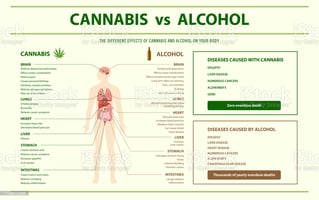In recent years, the use of hemp products has gained significant attention as an alternative to...
Hemp-Crete For Homeless Families - Sustainable Housing | The Online Full Spectrum CBD & Hemp Store+
In the quest for sustainable and affordable housing solutions, hemp concrete has emerged as a revolutionary material with immense potential. This article delves into the unique properties and benefits of hemp concrete, highlighting how it could contribute to addressing the housing crisis faced by homeless families. By harnessing the power of hemp and sustainable construction practices, we can pave the way for a brighter future for those in need.
1. Understanding Hemp Concrete:
Hemp concrete, also known as hempcrete, is a bio-composite material made from the woody core of the hemp plant, known as the hurd or shiv, combined with a lime-based binder. This eco-friendly material offers several advantages over traditional construction materials such as concrete, brick, or wood.
2. Environmental Sustainability:
One of the most significant benefits of hemp concrete lies in its environmental sustainability. Hemp plants absorb large amounts of carbon dioxide (CO2) during their growth, making them a valuable tool in carbon sequestration. When used in construction, hempcrete continues to absorb CO2 over its lifetime, effectively acting as a carbon sink. This property makes hemp concrete a key contributor to reducing greenhouse gas emissions and combating climate change.
3. Thermal and Acoustic Performance:
Hemp concrete exhibits excellent thermal and acoustic insulation properties. Its unique porous structure allows it to regulate indoor temperature, reducing the need for excessive heating or cooling. This characteristic not only improves energy efficiency but also ensures a comfortable living environment for homeless families, particularly during extreme weather conditions.
4. Strength and Durability:
Although not as strong as traditional concrete, hempcrete possesses sufficient strength for non-load-bearing structures. Its lightweight nature also reduces the overall weight of the building, making it easier and more cost-effective to transport and construct. Additionally, hempcrete's high vapor permeability prevents the accumulation of moisture, thus minimizing the risk of mold growth and increasing the lifespan of the structure.
5. Affordability and Accessibility:
Hemp concrete presents an affordable alternative to conventional building materials. Hemp crops are fast-growing, requiring minimal water, pesticides, and fertilizers, resulting in lower production costs. Moreover, hemp plants can be cultivated in a variety of climates, making hempcrete accessible in diverse geographical regions. By utilizing hempcrete, housing projects for homeless families can be more cost-effective and scalable.
6. Social and Economic Implications:
The adoption of hemp concrete for housing initiatives can have significant social and economic benefits. By providing sustainable and affordable homes, homeless families can regain stability, dignity, and a sense of belonging. Furthermore, the growth of the hemp industry would create new job opportunities, particularly in rural areas where hemp cultivation can thrive, contributing to local economic development.
Conclusion:
Hemp concrete represents a remarkable opportunity to address the pressing issue of homelessness while promoting sustainability and environmental stewardship. Its unique properties, including environmental friendliness, thermal and acoustic insulation, and affordability, make it an ideal material for constructing homes for homeless families. By embracing hempcrete and integrating it into housing policies and initiatives, we can create a brighter future, offering safe, sustainable, and cost-effective living solutions for those in need.


